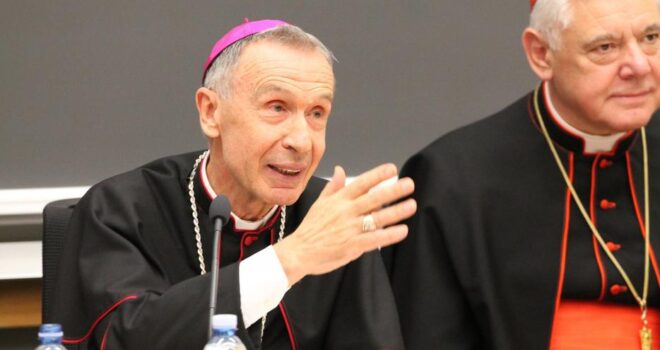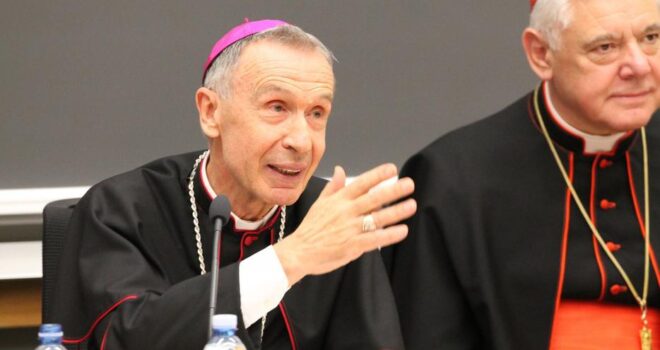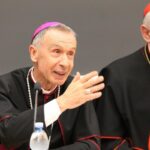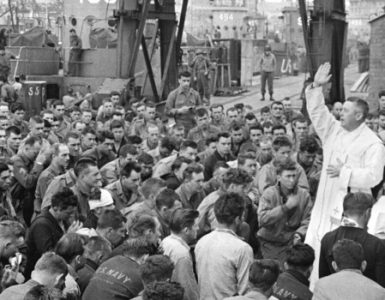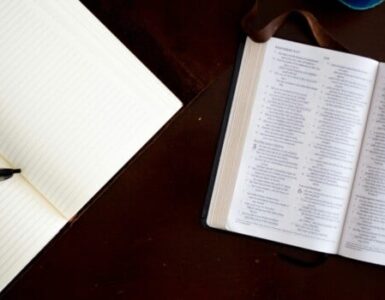On July 1st, the Holy See announced that Pope Francis had appointed Víctor Manuel Fernández, Archbishop of La Plata, to succeed Cardinal Luis Francisco Ladaria Ferrer as Prefect of the Dicastery for the Doctrine of the Faith (anachronistically referred to as the “CDF” or “Holy Office”). The position is one of the most important at the Vatican, given the Dicastery’s duty “to promote and safeguard the doctrine on faith and morals in the whole Catholic world” (Pastor Bonus, art. 48).
It is interesting to note that, prior to Joseph Ratzinger in 2005, four centuries had passed since a head of the Holy Office had been elected pope. Cardinal Camillo Borghese (1552-1621), who had been in charge of the Roman Inquisition for two years, was elected on 16 May 1605, taking the name Paul V. Prior to that, by a unique coincidence, Gian Pietro Carafa (1476-1556), elected as Paul IV on 23 May 1555, was, like Ratzinger, not only in charge of the Holy Office, but also Dean of the College of Cardinals.
Though a much less conspicuous figure than Ratzinger, Borghese, or Carafa, Cardinal Ladaria would, in my opinion, make a nice addition to the list of former-prefect-popes. It isn’t likely to happen, of course, given that (1) he will turn eighty next year (though he has always looked and moved like someone half his age); (2) he is humble and would well decline (though he might accept out of obedience); and (3) he’s a member of the Society of Jesus (one Jesuit pope is an anomaly, two in succession would be miraculous). While the blogosphere stirs up silly nonsense about Ladaria’s successor’s catechetical work entitled Saname Con Tu Boca. El Arte De Besar (Heal Me With Your Mouth: The Art of Kissing), I fear a well-deserved acknowledgment of Cardinal Ladaria will be missed, so I feel compelled to share a word about my former teacher.
I was privileged to study under Fr. Ladaria at the Pontifical Gregorian University, where he taught – among other things – Christian anthropology and trinitarian theology. Then, as now, he was known for his hard work, cheerful demeanor, and natural shyness. He always made it a habit to place a large box at the front of the lecture hall for students to place their questions in, all of which he would thoroughly respond to after a break. This was an integral part of his dialectical pedagogy. He always presented two extremes, demonstrated why each was problematic, and then proceeded to elaborate the most reasonable – and invariably orthodox – position. It was a highly effective and attractive way of teaching, for it incorporated the best elements of scholasticism and the nouvelle théologie, though often irking hardliners of each.
Luis Francisco Ladaria Ferrer was born in 1944 on Majorca, the largest Balearic Island in Spain. After attending the Jesuit College in Palma de Mallorca, he obtained a law degree from the University of Madrid in 1966, leading to what he describes as a “natural road” to the priesthood in the Society of Jesus. His initial theological studies were undertaken at the Sankt Georgen Graduate School of Philosophy and Theology in Frankfurt.
Fr. Ladaria completed a doctorate in theology at the Gregorian University in 1975 with a dissertation on the Holy Spirit in Saint Hilary of Poitiers, directed by Fr. Antonio Orbe (1917-2003), one of the Gregorian’s finest patrologists. Among Ladaria’s most significant works since then are El Dios Vivo y Verdadero: El Misterio de La Trinidad (The Living and True God: The Mystery of the Trinity), and his introduction to Christian anthropology, which, unfortunately, has not yet been translated into English.
I remember the disappointment I felt when Pope Benedict XVI appointed him Secretary of the CDF in 2008 – not because he was a poor choice (indeed, Benedict could not have chosen better), but because it foreboded the end of Ladaria’s teaching days. His students remember him as a generous, indefatigable thesis director, in addition to carrying a heavy course load.
Early in 2009 – almost a year after he was appointed Secretary – I ran into Archbishop Ladaria near Saint Peter’s Square. He was always discreet about his work, but I distinctly remember him alluding to schisms within the next twenty years. Well on our way to the two-decade mark since then, I now, sadly, understand what he meant.
A happier memory is an encounter I had with him while still his student at the Gregorian. I was chatting with a homeless friend of mine named “Pino” on the Via del Vaccaro after class. Passing by, Fr. Ladaria nodded and extended a gracious “Buona sera” to both of us. As soon as he was out of earshot, Pino remarked, “That man is a brilliant theologian.” Pino was a voracious reader, so I presumed he had read some of Ladaria’s books. But when I asked him, “How do you know?”, he simply answered, “I can tell from his smile.”
That’s the Fr. Ladaria known and loved by his fellow Jesuits, his former students, and his colleagues in the Roman Curia. That’s the Cardinal Ladaria who has tirelessly served the Church “in sanctity and justice,” as his episcopal motto states. That’s the man who – as unlikely as it is – I wouldn’t mind see stepping out on the Benediction Loggia someday.
Photo: Bohumil Petrik/CNA


